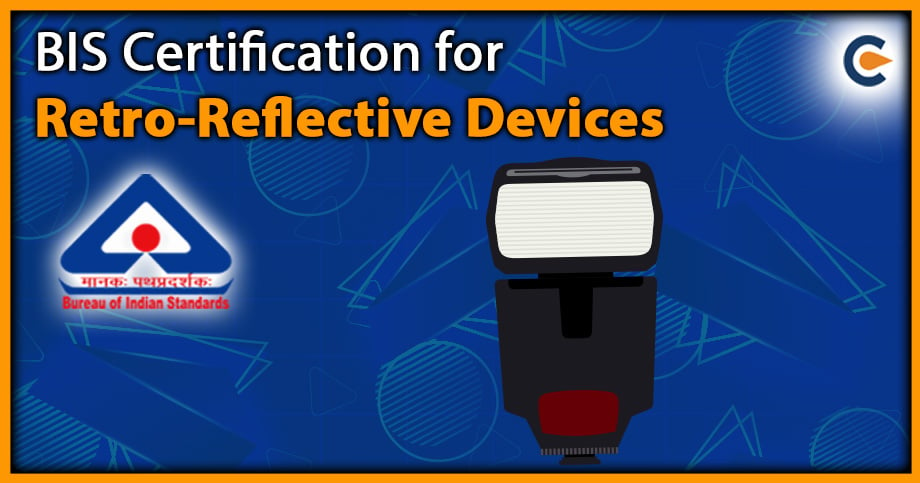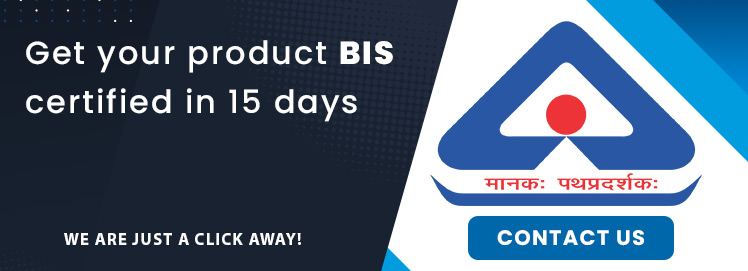Retro-Reflective devices come in handy for cyclists by making them visible on road during the night commute. These devices help avert possible fatalities on road triggered by challenging light scenarios. BIS has underpinned a slew of guidelines on how these products should be manufactured and tested in view of the governing legislation namely ISO 6742 (part 2). Let’s talk about these requirements in detail and have a walkthrough of the process for securing BIS certification for Retro-reflective devices in India.
An Overview of ISO 6742 (part 2) – An Indian Standard
ISO 6742 (Part 2) was adopted by the Bureau of Indian Standards on the recommendation of the transport engineering division council. This standard is quite similar to the global version of the standard namely ISO 6742/2-1985.
ISO 6742 (Part 2) pens down the photometric and physical requirements to which Retro-Reflective devices must adhere. Such devices serve as life-saving gear for cyclists as they help them get noticed by other motorists on road in low visibility.
Classification of Retro-Reflective Devices
IS/ISO 6742-2:2015 classifies Retro-Reflective Devices depending on product type and color as shown below:
- Reflector
- Retro-reflective Tyres (White, White/Yellow)
- Retro-reflective Spoke Cases (White)
- Retro-reflective Spokes (White)
Each reflector must adhere to the photometric and colorimetric requirements cited in the standard.
The CIL values for such devices shall be in line with what is mentioned in the standard. Each reflector must adhere to a specific installable method so the end-user can mount them in the intended orientation on their bicycle.
Quality tests for each product type are mandatory as per the standard if the production facility manufactured all varieties of retro-reflective devices.
Tests to Qualify For BIS Certification for Retro-Reflective Devices
The retro-reflective devices must pass the following tests to become eligible for the BIS certification:
- Temperature Resistance Test
- Photometric Requirements
- Colorimetric Requirements
- Moisture Resistance Test
- Impact Test
- Resistance To Fuels
- Adhesion Test
- Abrasion Resistance
- Resistance To Corrosion
- Water Test
A lab in which all these tests are proposed to take place should be adequately maintained and must have qualified staff. And the way these tests should be performed is mentioned in the standard.
Marking Requirements for Retro-Reflective Device
Each retro-reflective device must bear standardized markings reflecting the following details. Every manufacturer must refer to IS 6742 (part 2): 2015 for this purpose.
- Part of ISO 6742
- Manufacturer’s Name Or Trademark
- ISI Marking
Only qualified products can bear ISI marking. Stringent penalties would be imposed on those involved in the illicit of use of the same. The BIS will vet the production facility and paperwork thoroughly from a compliance standpoint before granting the BIS ISI certification.
Documents Needed For BIS Certification for Retro-Reflective Devices
The mandatory documentation for BIS certification for retro-reflective is as follows:
- Factory license
- Pollution NOC accorded by SPCB
- List of apparatus and equipment in the lab
- Partnership deed or COI
- A lab report affirming the product quality
- Flowchart showing the production process
- Details of products to be registered under the BIS ISI scheme
- Details of production-related machinery
- Trademark registration
- An authorization letter for an agent to file a BIS license
How to Obtain BIS Certification for Retro-Reflective Devices?
The detailed procedure concerning the BIS certification for Retro-reflective devices is as follows:
Step 1: Go To the BIS Website and File E-Application
The application for BIS ISI certification is available on the BIS official portal. All you need is to get access to this application and fill it out with legitimate details.
Post this, the portal will prompt you to upload the aforementioned documents in the standard format. Once done, the final step of application filling will arrive, which is fee submission. Do the needful to pay the fee and secure an acknowledgment receipt for future reference.
Note: No two or more products can be registered under the ISI scheme via a single application. You must file a separate application if you deal with multiple product types.
Step 2: Thorough Vetting of Paperwork and Production Premise
In this step, the BIS officials[1] are supposed to perform a comprehensive vetting of submitted paperwork and the production facility to discover any non-conformity.
While probing the manufacturing premise for non-compliance, the inspecting personnel will put extra stress on the following parameters
- Manufacturing Infrastructure
- Testing capabilities
- Production process
- Standard(s) being followed
Note: On-site vetting shall be immediately followed by another vital step, which is Sample collection. While doing so, the officials will follow the sampling methods as mentioned in the standard.
Step 3: Lab testing and report preparation
The chosen samples shall make their way to the certified lab where the following tests will be performed as per the Standard’s directions.
- Temperature resistance test
- Photometric requirements
- Colorimetric requirements
- Moisture Resistance test
- Impact test
- Resistance to fuels
- Adhesion test
- Abrasion resistance
- Resistance to corrosion
- Water test
Post-test completion, the lab will enclose their finding in a detailed report, which will be further shared with the applicant.
Step 4: Report Review and Grant of BIS license
The applicant, after receiving the lab report, shall contact the authority and share the lab report.
The authority, in response, performs a detailed review of the report to find any non-conformity with the product(s). Based on the outcomes of the tests, the authority will either approve or reject the certification request.
Conclusion
BIS certification for Retro-reflective devices enables manufacturers to carry out production and testing undertakings in a standardized way, leading to improved product quality. Products with ISI marking foster a credible image in the market as compared to non-marked or generic counterparts.
Also Read:
What Is BIS Certification In India?













